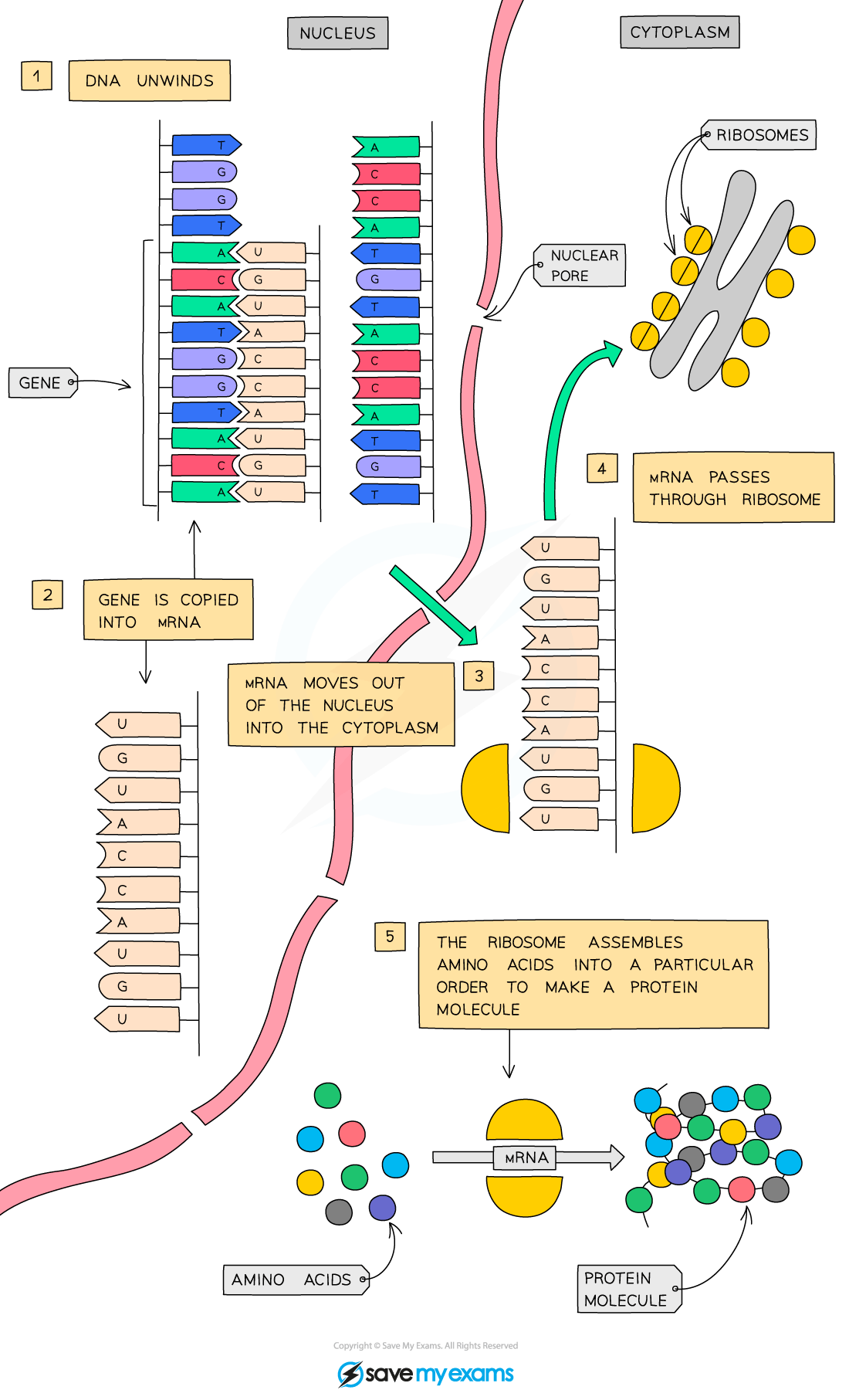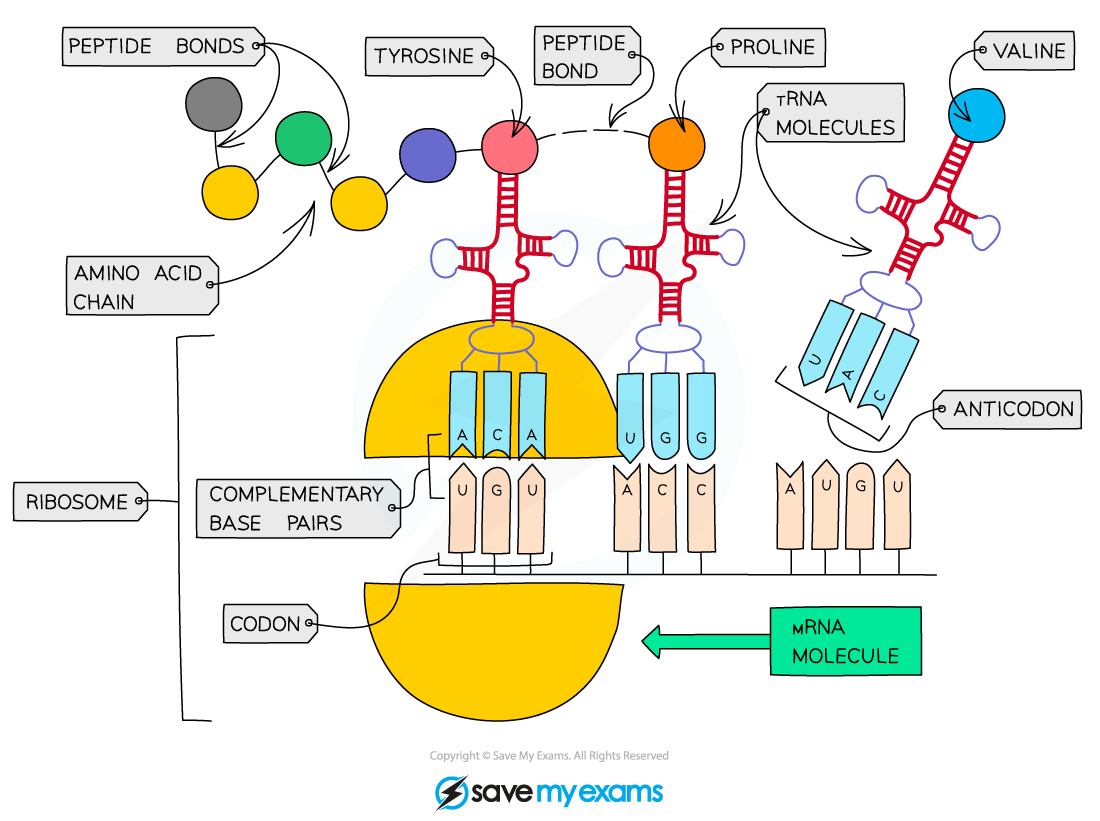- 翰林提供学术活动、国际课程、科研项目一站式留学背景提升服务!
- 400 888 0080
CIE IGCSE Biology: 复习笔记:17.1.4 Protein Synthesis
CIE IGCSE Biology: 复习笔记:17.1.4 Protein Synthesis
Transcription & Translation: Extended
 Protein synthesis
Protein synthesis
- Proteins are made by ribosomes with the sequence of amino acids controlled by the sequence of bases contained within DNA
- DNA cannot travel out of the nucleus to the ribosomes (it is far too big to pass through a nuclear pore) so the base code of each gene is transcribed onto an RNA molecule called messenger RNA (mRNA).
- mRNA then moves out of the nucleus and attaches to a ribosome
- The ribosome ‘reads’ the code on the mRNA in groups of three
- Each triplet of bases codes for a specific amino acid
- In this way the ribosome translates the sequence of bases into a sequence of amino acids that make up a protein
- Once the amino acid chain has been assembled, it is released from the ribosome so it can fold and form the final structure of the protein

The triplet code of DNA (carried by mRNA) is read by the ribosome and amino acids are attached together in a specific sequence to form the protein
- In this way, DNA controls cell function by controlling the production of proteins
- The proteins may be enzymes, antibodies, or receptors for neurotransmitters
- Although all body cells in an organism contain the same genes, many genes in a particular cell are not expressed because the cell only makes the specific proteins it needs
转载自savemyexams

早鸟钜惠!翰林2025暑期班课上线

最新发布
© 2025. All Rights Reserved. 沪ICP备2023009024号-1








